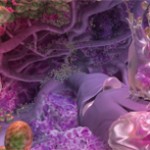Neutrophils represent an intriguing and long overlooked therapeutic target toward resolving inflammation.
A recent study in Nature Medicine by researcher Christine Schauer, MD, of the Friedrich-Alexander-University, Erlangen-Nuremberg in Bavaria, Germany, and colleagues, describes how neutrophils can limit the inflammatory response in healthy individuals.1 An understanding of this new antiinflammatory pathway may point the way toward future, novel immunomodulatory therapies for gout, a disease associated with inflammation that includes an accumulation of neutrophils.
Neutrophils densely infiltrate inflamed tissues, and traditional understanding has it that mononuclear phagocytes are important for the clearance of neutrophils. The new data suggest that neutrophils can contribute not only to their own clearance, but also to the resolution of the entire local inflammatory response by forming aggregated neutrophil extracellular traps (aggNETs) that degrade cytokines and chemokines.
Therefore, they can disrupt recruitment and activation of neutrophils and other inflammatory cells. Neutrophils require reactive oxygen species (ROS) to form these aggNETs, the authors point out.
Patients with gout appear to have impaired NETosis. In these patients, monosodium urate (MSU) crystals induce an uncontrolled release of inflammatory mediators from neutrophils, resulting in persistent inflammation and pathology.
The investigators began their study by using dual-energy computed tomography to examine the hands of patients with gout. They found that urate deposits persist in patients with gout even after the patients had transitioned from the highly inflammatory phase to the clinically silent phase. Patients with gout also had NETs that could be visualized as large stretches of diluted extracellular DNA spread throughout the tophus.
When the investigators added MSU crystals to neutrophils in culture, they observed neutrophils rearranging their nuclear structures and rapidly disintegrating and aggregating into NETs. The neutrophil cultures demonstrated the co-localization of DNA and neutrophil elastase that is characteristic of NETs. The investigators also found that adenosine triphosphate (ATP) and lactoferrin augmented the formation MSU crystal-induced aggNETs.
The team then turned to Ncf1** mice in order to better understand the process of NETosis in vivo. These mice lack a regulatory subunit of the Nox2 complex and are, therefore, unable to produce the ROS important to NETosis. The mice are also more susceptible to gout. Research using these mice has contributed to the understanding that ROS plays a role in regulating inflammation.
The authors injected MSU into Ncf1** mice and wild-type mice and analyzed the resulting aggregation of NETs and release of inflammatory mediators. As expected, Ncf1** mice had reduced NET aggregation compared with wild-type mice. NETosis-deficient mice also had higher amounts of proinflammatory cytokines following MSU injection than did wild-type mice, and the NETosis-deficient mice developed exacerbated and chronic disease. This was in contrast to the wild-type mice, which had rapid, but self-limited paw erythema and swelling in response to an injection of MSU.
